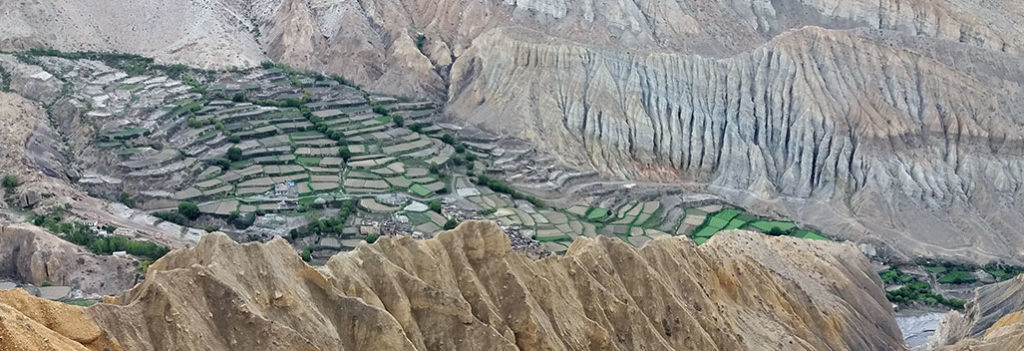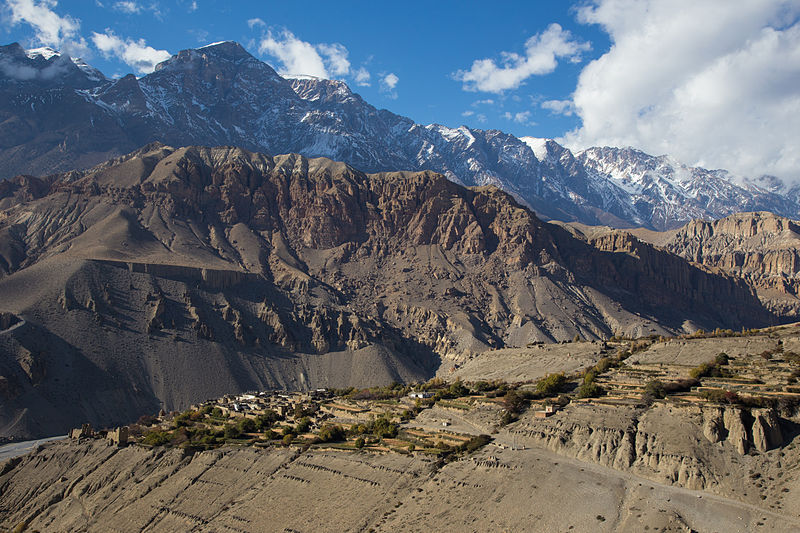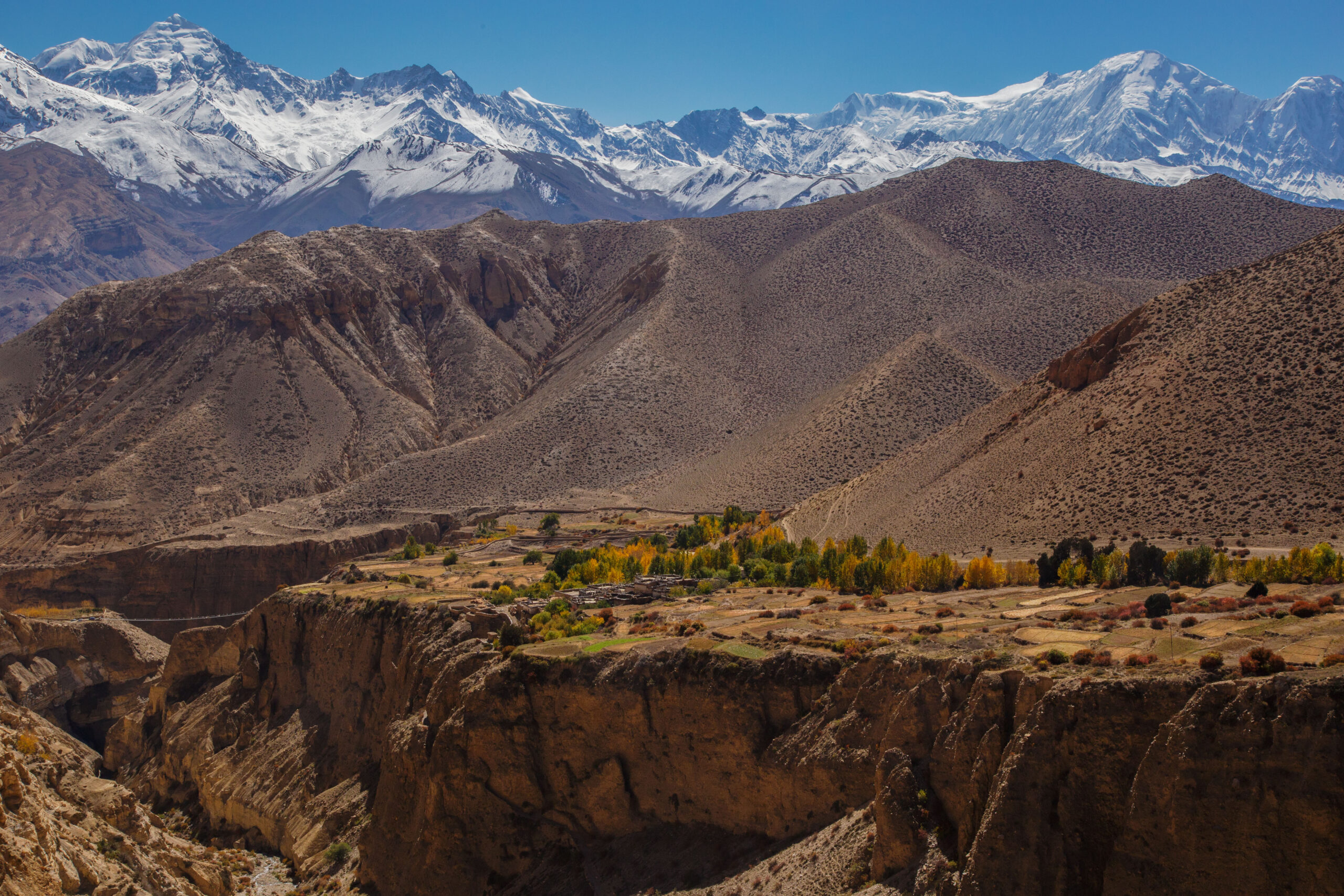
The Upper Mustang comprise the northern two-thirds of Mustang- District of Dhaulagiri Nepal. The southern third of the district is called Thak and is the homeland of the Thakali – who speak the Thakali Language and whose culture combines Tibetan and Nepalese elements. Life in Mustang revolves around tourism, animal husbandry and trade.
Mustang’s status as a kingdom ended in 2008 when its suzerain kingdom of Nepal became a republic. The influence of the outside world, especially china, is growing and contributing to rapid change in the lives of Mustang’s people Most of the population of Mustang lives near the Kali Gandagi River, 2800-3900 m above sea level. The administrative center of Mustang District is at Jomsom (eight kilometers south of Kagbeni) which has had an airport since 1962 and has become the main tourist entry point since Mustang was opened to western tourism in 1992. Mustang was once an independent kingdom, although closely tied by language and culture to Tibet. From the 15th century to the 17th century, its strategic location granted Mustang control over the trade between the Himalayas and India.
Though still recognized by many Mustang residents, the monarchy ceased to exist on October 7, 2008, by order of the Government of Nepal. The last official and later unofficial king (raja or gyelpo) was jedme dorje palbar Bista (1930-2016), who traced his lineage directly back to Ame pal, the warrior who founded this Buddhist kingdom in 1380.Ame Pal oversaw the founding and building of much of the Lo and Mustang capital of Lo- manthang, a walled city surprisingly little changed in appearance from that time period.In 2007, a shepherd in Mustang discovered a collection of 55 cave paintings depicting the life of the Buddha Foreign visitors have been allowed to the region since 1992, but tourism to Upper Mustang is regulated. Foreigners need to obtain a special permit to enter, costing US $ 50 per day per person. Most tourists travel by foot over largely the same trade route used in the 15th century. Over a thousand western trekkers now visit each year, with over 2,000 in 2008. Mustang is rich in Buddhist culture, similar to the area of the Tibet Autonomous Region It is an alternate way to experience the Tibetan culture and landscape to the tours provided by the Chinese government. The Tiji festival in
Lo-Manthang is another popular destination for tourists in the area seeking to experience the native culture.
The first westerner in Mustang was Toni Hagen. Swiss explorer and geologist, who visited the Kingdom in 1952 during one of his travels across the Himalayas. French Micheal peissel is considered the first westerner to stay in Lo Manthang, during the first authorized exploration of Mustang in 1964.
Trip facts
- Trekking type: Tea House
- Trek Duration: (15 to 18 days) Kathmandu-Kathmandu
- Max altitude: 4230 m
- Best Season : May – June and August – November




